What is Capeskin?
A question that has remained unanswered for a long time.
You heard that is is Lambskin, Goatskin, or common Sheepskin coming from the Cape of Good Hope.
Even that “it was a specific breed of hairy sheep…”
We are sure you heard everything, except the truth.
Why don’t they tell you the truth? you ask.
The answer is that they can’t tell you the truth because NOBODY knows it. And if they don’t know what it is, it follows that they are not able to source real Capeskin.
One vendor who wrongfully claims Capeskin comes from the “Cape Sheep” i.e. the South African long haired sheep, even issued a “Fake Capeskin in the Industry – Buyer Beware” warning to his customers.
Due to the above situation we feel we have an obligation to inform those who have interest that:
a. Capeskin does not come from Cape sheep
b. anyone who claims he makes jackets using Cape Sheep leather (i.e. leather from the South African hair sheep) is misleading the market
c. since other vendors do not use real Capeskin, what they use is either predistressed lambskin or shrunken lambskin at best.
In the following lines you will find all the answers.
So what is Cape Sheep?
It is a breed of fat tailed, hair sheep indigenous to South Africa, also known as Afrikaner sheep. (We will return to that later).
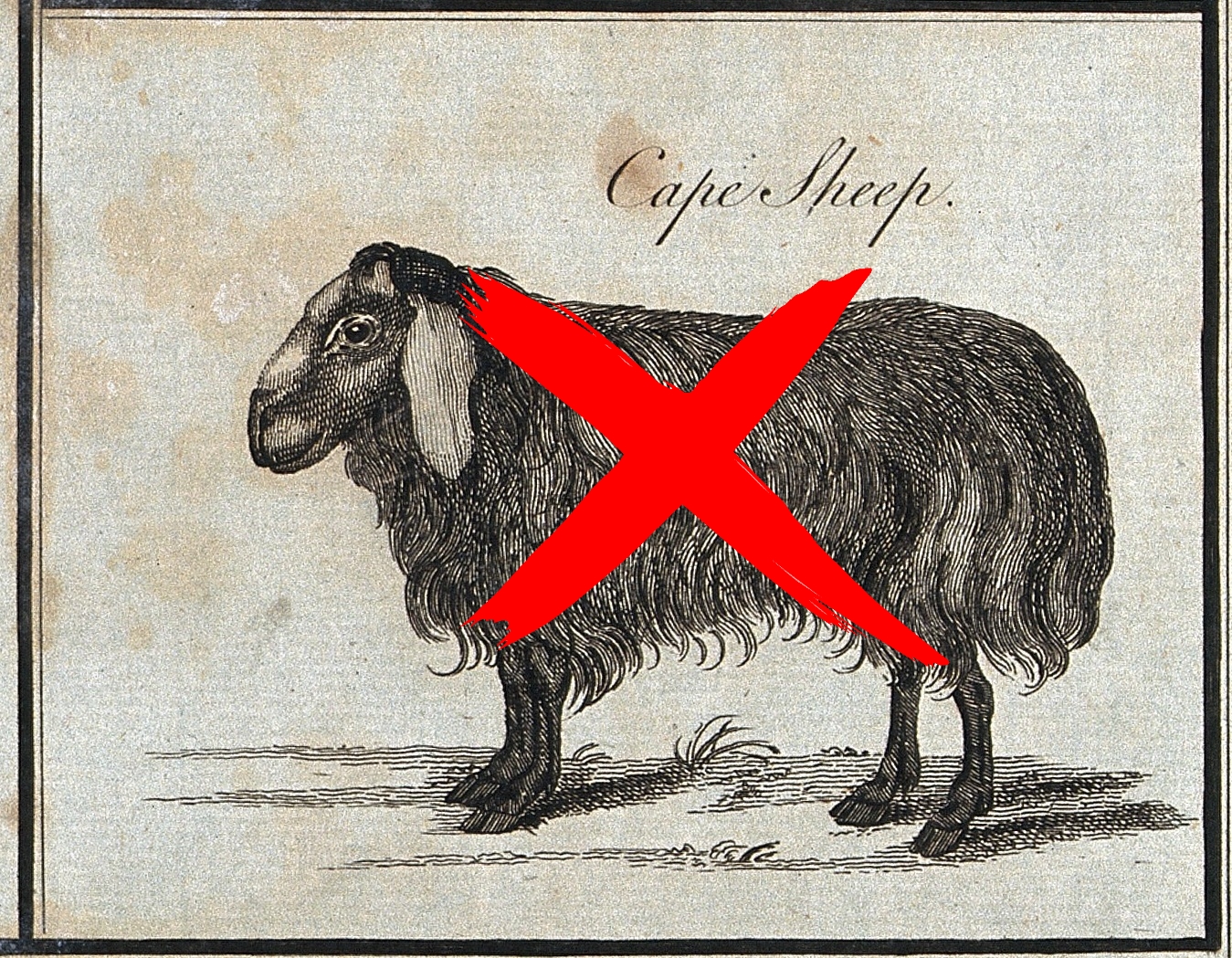
Picture 1. The Cape Sheep (= Not Capeskin)
Since all vendors unanimously agree to the fact that real Capeskin comes from the Cape of Good Hope in South Africa, then…
Why Capeskin does not come from Cape Sheep?
If Capeskin comes from South Africa why isn’t Capeskin the skin produced from the South African long haired sheep known as Cape Sheep? you ask.
Well, according to Terblanche (1979), the South African fields are home for 20 different breeds of sheep [1] several of which are indigenous, for example the Blinkhaar Ronderib Afrikaner, the Damara, the Namaqua Afrikaner, the Nguni and the Pedi. Other local breeds include the Afrino, the Merino, the Dohne Merino, the Van Rooy, the Ile de France and the Dormer, just to name a few. All these breeds are registered by the South African Studbook Association which is an organization regulating the livestock industry and animal improvement legislation in South Africa. Others set the number to a total of 23 sheep breeds recognized through either breed societies or interest groups in South Africa (Campher et al., 1998) [2]. According to other sources there are 109 different breeds of sheep farmed in South Africa and is the highest number among all African countries. [3]
So why would Capeskin come from Cape Sheep and not from any one of the other 108 breeds that live in the Cape of Good Hope in South Africa? (You understand now the validity of the claim that Capeskin comes from the South African long haired sheep “Cape Sheep” just because it is indigenous to South Africa).
And if Capeskin does not come from Cape Sheep then from which sheep does it come from?
A specific answer to the above question coming from a reliable source becomes now a necessity. It is given by the United States Department of Agriculture in their Technical Bulletin No. 466 entitled “Agriculture in Southern Africa” published in March 1935, which at page 28 reads:
“There are a large number of crossbred Persian-Merino sheep from which the commercial Cape skin is obtained”. [4]
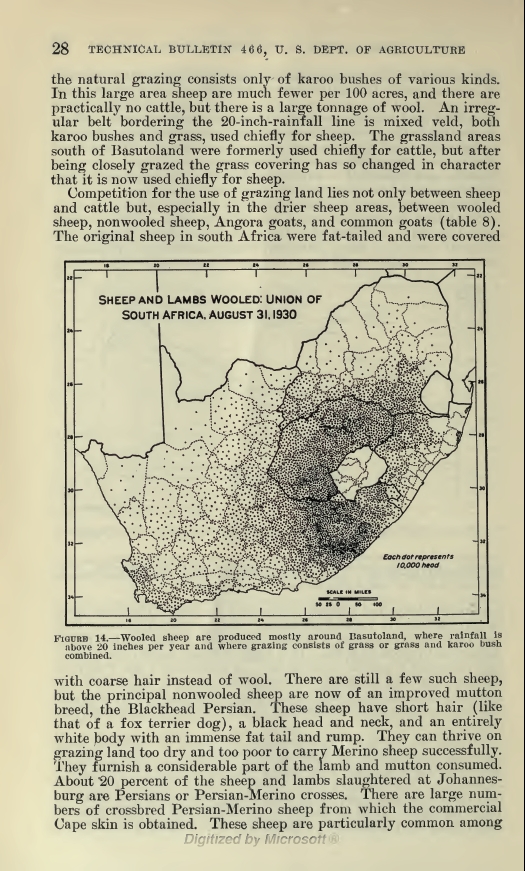
Picture 2: Excerpt from Technical Bulletin 466
So, there you have it, Capeskin comes from a cross breed of Persian and Merino sheep.
In the same bulletin it is mentioned that:
“The original sheep in south Africa were fat-tailed and were covered with coarse hair instead of wool. There are still a few such sheep but the principal nonwool sheep are now of an improved mutton breed, the Blackhead Persian.”
You can see that the number of the South African long haired sheep was already small in 1935 that the bulletin was written.
So what is the crossbred Persian-Merino sheep?
It is a breed that was developed in the late 1920s out of necessity to have an animal that could thrive in the harsh South African climate that only receives 4-6 inches of rain per year.
Let’s look at the background of that.
The Blackhead Persian (also known as Swartkoppersie) is a fat-tailed breed of domestic sheep from Africa. The sheep is originally from Somalia (the Somali inhabited areas of the Horn of Africa) and a direct descendant of the Somali sheep.[5] The breed is also a type of hair sheep, meaning they do not grow wool and tolerate heat better than wooled breeds and are raised primarily for meat. The Blackhead Persian has a white body and, as their name would suggest, an entirely black head.[6]
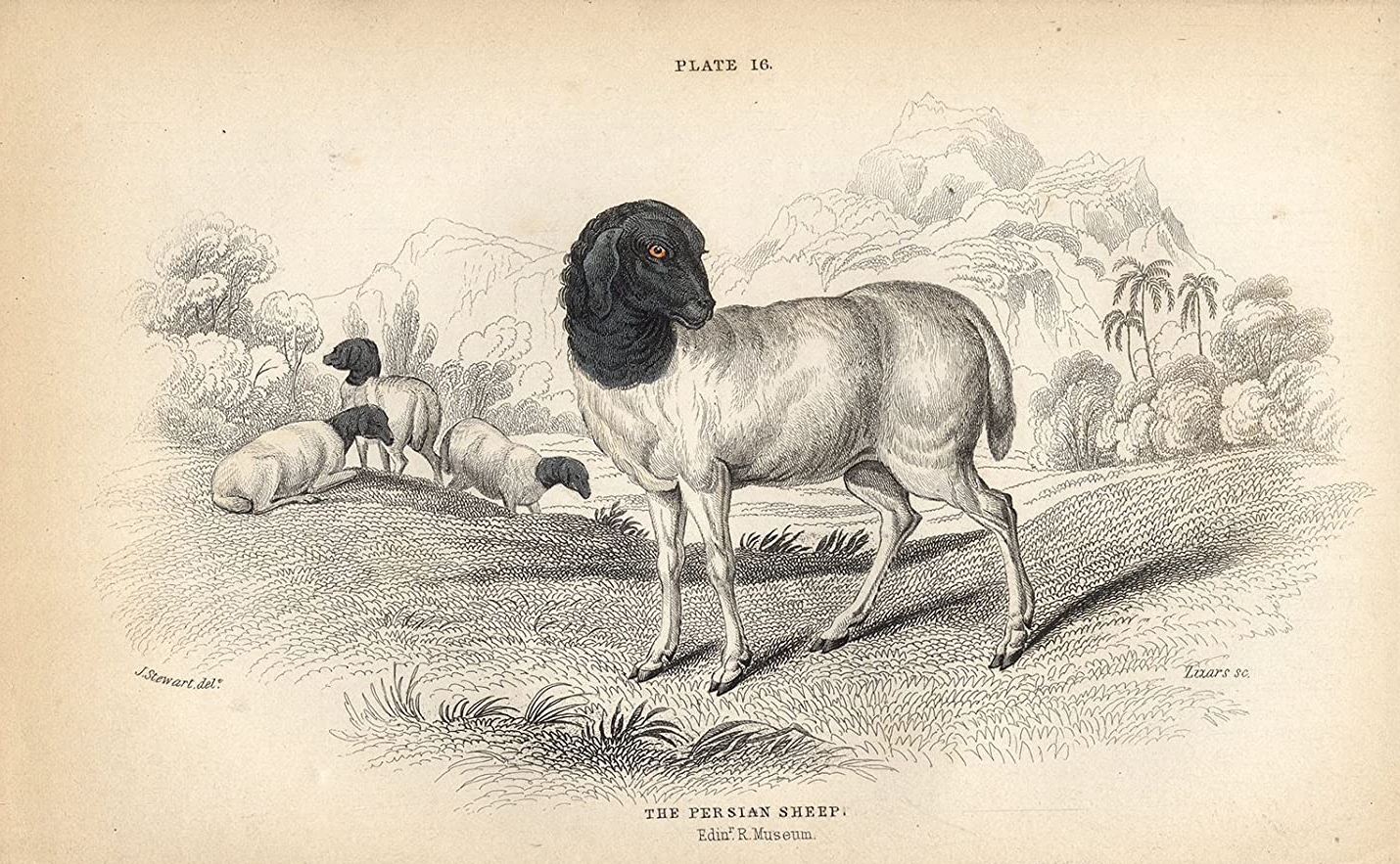
Picture 3. The Blackhead Persian sheep
Despite its name, the Blackhead Persian originated in Somalia and was imported into South Africa in about 1870.
The Blackhead Persian was crossbred with Merino sheep [7] creating the Permer sheep [8] (name is derived from its ancestry Persian-Merino) which is the source of Capeskin according to the Technical Bulletin No 466.
The Merino sheep originated in North Africa, then brought to Spain and were later spread to other parts of the world. Merinos were brought to South Africa as early as 1789 but it was later found that the Australian Merino, the Wanganella and Peppin type, was best suited to improve their flocks, and large numbers of this breed were imported in the 1800s [8] from Australia or New Zealand.
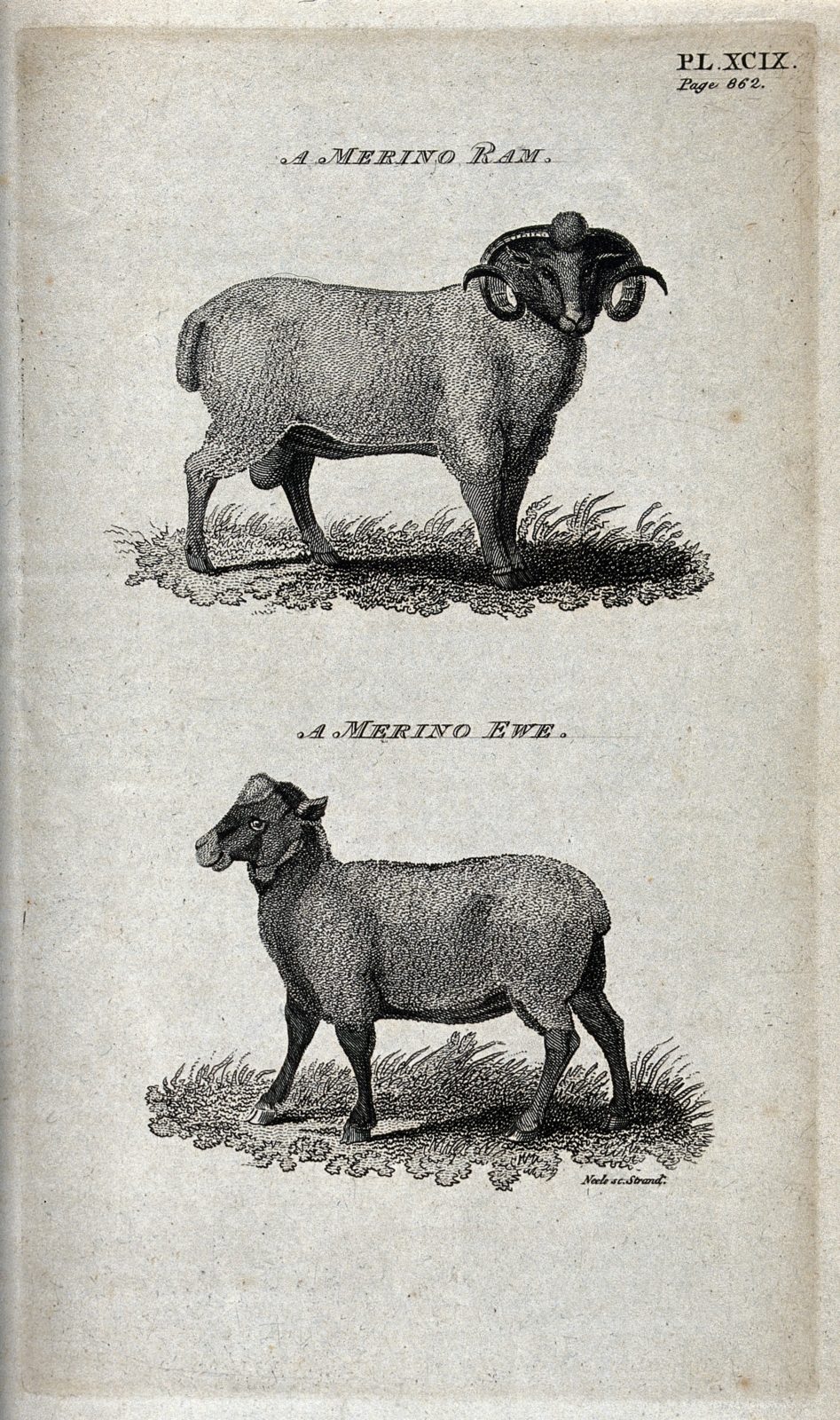
Picture 4. Merino sheep
Subsequently there was further improvement by crossing the Blackhead Persian with another composite Merino breed named Dorset Horn thus creating the successful breed known as the “Dorper”.
Let’s have a look at what the Dorset sheep is.
The Dorset Horn originated in Dorset in South-West England. It probably derived from cross-breeding of Merinos imported from Spain with the local tan faced sheep. [9]
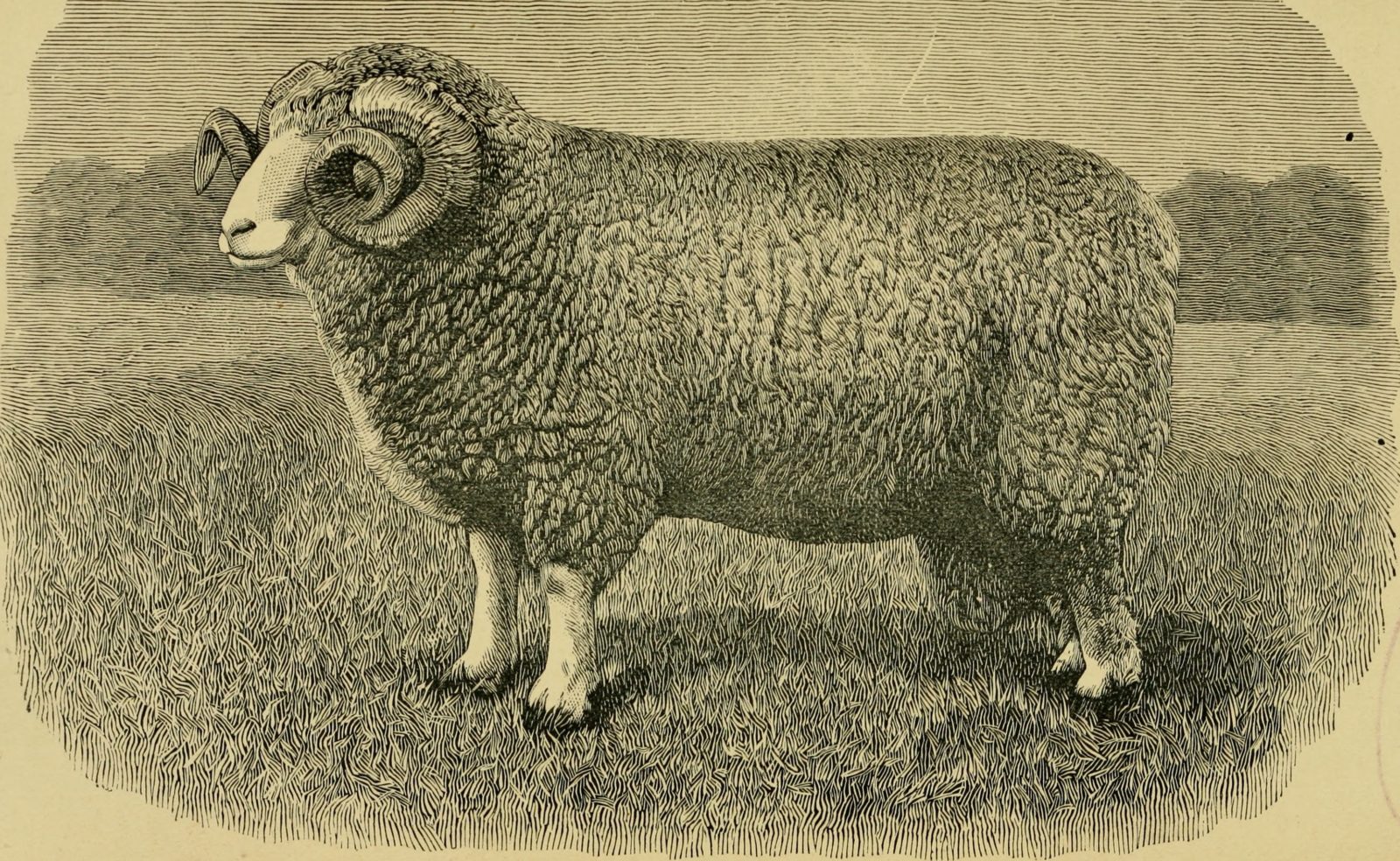
Picture 5. The Dorset Horn sheep
So what is the Dorper sheep?
In sheep101.info we read:
The Dorper breed is numerically the second largest breed in South Africa. In the year 2000, the estimated number of Dorpers in South Africa was 7 million [10].Their popularity has spread to many countries throughout the world, including the United States in 1995. The Dorper was developed in South Africa in the 1930’s, through crossing of the Blackheaded Persian ewe (a native fat-tailed sheep) with the Dorset Horn (a mutton breed).
The breed has a characteristic black head (Dorper) or can be all white (White Dorper). Dorpers are a well-proportioned breed with heavy muscled hindquarters. Their skin covering is a mixture of hair and wool and it will drop off without being sheared. The Dorper has a thick skin which is highly prized and protects the sheep under harsh climatic conditions. It is the most sought after sheepskin in the world. [11]

Picture 6. The Dorper sheep
Therefore, Capeskin or Cape Leather should refer to leather made from skins of the Dorper sheep and be correctly confined to leather from South African origin Dorper sheep. Genuine capeskin from South Africa is a light, flexible, fine grained leather with distinguished grain patterns and texture including ribbiness. When used to describe capeskin other than the South African, it should be referred to as ‘Domestic Capeskin’, ‘Spanish Capeskin’, etc.
How do you know other vendors are not being honest about using Cape Sheep leather?
Returning to the Cape Sheep, there are two varieties of Afrikaner sheep (Cape Sheep); The Namaqua Afrikaner and the Ronderib Afrikaner. There are two known sub varieties of the latter breed, one that has soft, fine, shiny hair being the Blinkhaar Ronderib Afrikaner, and the Steekhaar Ronderib Afrikaner having coarse hair. (There are of course other sheep indigenous to South Africa, namely the Damara, Blackhead Persian, Pedi, and the Nguni but they are all short hair sheep that do not match the illustration shown above in picture 1).
The Namaqua Afrikaner is an endangered breed. Cross breeding for a more market-acceptable carcass has almost led to the extinction of this breed. To prevent extinction the Department of Agriculture stepped in and bought the last purebred flock from P.J. Maas from Namies, Springbok in 1966. There are currently 2 flocks of 100 ewes each being maintained by the Northern Cape Department of Agriculture. [12]
The Blinkhaar Ronderib Afrikaner population numbers (Updated between 1990–2018) was 1000 animals. [13]
The Steekhaar Ronderib Afrikaner was thought to be extinct. However, twenty animals were found in 1995 on a farm near Upington. [14]
You don’t have to be a PhD to understand that you can’t have leather production neither from an endangered species nor from a breed whose population is 1000. Therefore, it is shown that anyone who advertise Cape Sheep as the source of their “Capeskin” leather are blatantly cheating their customers.
So what is Shrunken lambskin?
It is lambskin that has undergone a shrinking procedure at the tannery, which involves chemical and mechanical methods, (and possibly also boiling), to give it grain characteristics that weren’t there before. The texture of shrunken lambskin is different to that of Capeskin but customers are tricked to believe they are the same because both leathers have texture and rugged appearance.
Here is a photo of what shrunken lambskin looks like.
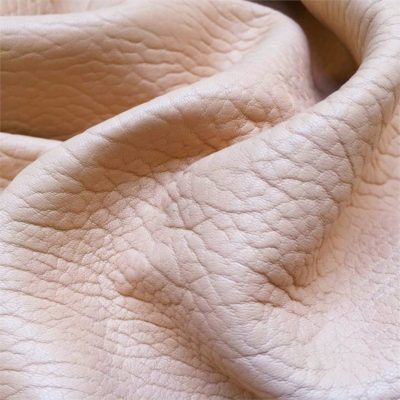
Picture 7. Shrunken Lambskin
Last but not least, we are not happy to comment on what other people are doing but at this time other vendors are guilty of “unfair competition” which inevitably hurts other honest businesses including ours, so we have to do what it takes to defend ourselves. Furthermore, customers are also vulnerable because they do not have the means and the information to know that they are being cheated. Hence we decided to share the information herein to protect the customers and ourselves.
Please remember that up to the time that this report was written, April 2020, nobody in the vintage leather jacket reproduction market was aware of the true origins of Capeskin and none of them ever referred to the Dorper sheep nowhere. We expect the name Dorper soon to be discussed among enthusiasts and slowly appear in our competitors’ websites as they will inevitably, sooner or later, be switching from the pseudo capeskin they sell to the real thing.
References.
- Terblanche EleF (1979) Ken ons Kleinveerasse (Know our small stock breeds). In Afrikaans. 174 pp. Human and Rousseau Publishers, Cape Town, South Africa.
- South African Livestock Breeding (1998) Eds. JP Campher, C Hunlun, GJ van Zyl. South African Stud Book and Livestock Improvement Association, PO Box 270, Bloemfontein 9300, South Africa
- African Union—Interafrican Bureau for Animal Resources (AU-IBAR). Strategic Plan 2010–2014; African Union: Nairobi, Kenya, 2009.
- “Agriculture in Southern Africa” (1935), Technical Bulletin No. 466, United States Department of Agriculture, p.28
- “Blackhead Persian”. Breeds of Livestock. Oklahoma State University, Dept. of Animal Science.
- Kruger, L. “Indigenous Sheep Breeds of South Africa”. Agricultural Research Council of South Africa.
- Davy, J. B., 1927. Persian and Merino sheep crosses. Journal of Heredity, Volume 18, Issue 1, January 1927, p. 25–32
- “TRYPANOTOLERANT LIVESTOCK IN WEST & CENTRAL AFRICA, VOL. 2 – COUNTRY STUDIES”, International Livestock Centre for Africa, Food and Agriculture Organization of the United Nations, United Nations Environment Programme, International Livestock Centre For Africa – Addis Ababa.
- https://merinosa.co.za/history/
- Dorset Horn. Kenilworth, Warwickshire: Rare Breeds Survival Trust.
- Milne, C. 2000. The history of the Dorper sheep. Small Ruminant Research 36: 99- 102.
- http://www.sheep101.info/breedsD-F.html#Dorper
- Ramsay, K., Harris, L. & Kotzé, A., 2001. Landrace breeds: South Africa’s indigenous and locally developed farm animals. Farm animal conservation trust, Pretoria.
- Molotsi A.H., Dube B., Cloete S.W.P. (2019) The Current Status of Indigenous Ovine Genetic Resources in Southern Africa and Future Sustainable Utilisation to Improve Livelihoods, MDPI, Basel, Switzerland.
- https://en.wikipedia.org/wiki/Afrikaner_sheep




